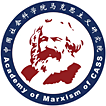Improving the layout of the state-owned sector and adjusting its structure by the Central committee of the Communist Party of China (CPC) within the framework of the socialist market economy represent a significant theoretical innovation rooted in China’s practical experience, as well as a major practical endeavor aimed at achieving high-quality development in this new era. Building upon Marxist industrial and public ownership theories, and drawing from the CPC Central Committee’s ongoing exploration and refinement of the implementation of public ownership, this paper elucidates that improving the layout of the state-owned sector and adjusting its structure are an organic amalgamation of the spontaneous, dynamic optimization of industrial development and the proactive governmental coordination of layout of productive forces, With the continuous deepening of the CPC Central Committee’s understanding of the laws governing the socialist market economy, moves to realize state-owned economy have been constantly enriched and improved, progressing through three phases of “accumulation and expansion”, “strategic adjustment of its layout and structure”, and “layout improvement and structural adjustment”. The transition of the development goals and directions of the state-owned sector, from being planned, to being guided the market and industrial policy, and finally to being “market-oriented and enterprise oriented”, is a vivid portrayal of how theory and policy support and complement each other. In addressing issues such as the evident imbalance in the industrial distribution of the state owned economy and the lack of coordination in its industrial structure in the new era, it is imperative to ground practice in the theory of the socialist market economy, adhere to a people-centered approach, and strive for high-quality development as the ultimate goal.
Editor: Zhong Yao LiuTingting
From: Teaching and Research. 2025.No.2.
 ACADEMY OF MARXISM CHINESE ACADEMY OF SOCIAL SCIENCES
ACADEMY OF MARXISM CHINESE ACADEMY OF SOCIAL SCIENCES
 ACADEMY OF MARXISM CHINESE ACADEMY OF SOCIAL SCIENCES
ACADEMY OF MARXISM CHINESE ACADEMY OF SOCIAL SCIENCES
 ACADEMY OF MARXISM CHINESE ACADEMY OF SOCIAL SCIENCES
ACADEMY OF MARXISM CHINESE ACADEMY OF SOCIAL SCIENCES